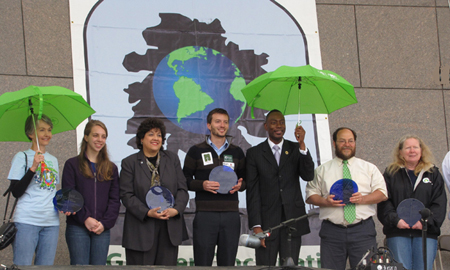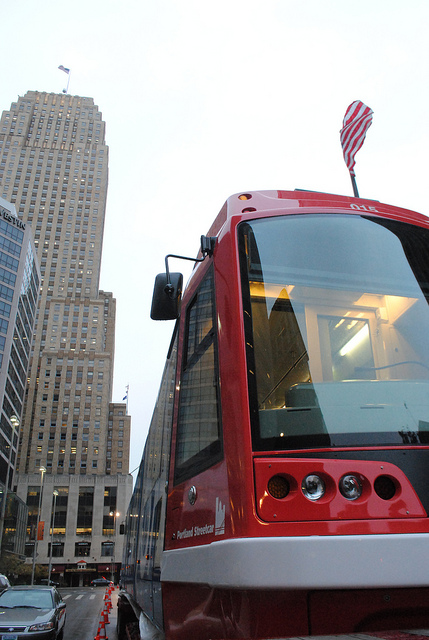Since 2008, the Greater Cincinnati Earth Coalition has honored the region’s most outstanding and innovative projects, programs and individuals whose efforts have worked to improve and protect the environment.
Each year the organization has honored teachers, students, citizens, businesses, and governmental agencies for their work during Earth Day celebrations at Sawyer Point Park.
In 2012, Cincinnati’s Office of Environmental Quality (government), the Southwest Ohio Regional Transit Authority’s Metro bus service (business/organization), Regina Faulkner (citizen), Brian Kunkemoeller (student), and Ellen McGrath (teacher) were honored.
Earth Day celebrations will take place on Saturday, April 20 at Sawyer Point from 12pm to 5pm, and the Greater Cincinnati Earth Coalition is now accepting nominations for this year’s awards. Those who feel that they know of a qualified candidate are asked to follow the guidelines for each category.
- Business/Organization: Recognizes commitment to the environment, including through green design, recycling, environmental programming, energy innovation, or products.
- Government Agencies: Recognizes environmental stewardship, including through programming, legislation, air-quality, environmental promotion, community building or conservation.
- Teacher: Recognizes efforts to increase environmental awareness, including demonstrating leadership or teaching others about the environment.
- Student: Recognizes a student who has demonstrated environmental stewardship.
- Citizen: Recognized an individual who has demonstrated a contribution to the environment.
Nominations for the 2013 Environmental Awards are due by March 15, 2013. Nomination forms can be downloaded online and submitted to Cindy Kirchmer at kirchmer.cindy@epa.gov or mailed to U.S. EPA, Attn: Cindy Kirchmer (WG-12), 26 W. Martin Luther King Drive, Cincinnati, OH 45368.



